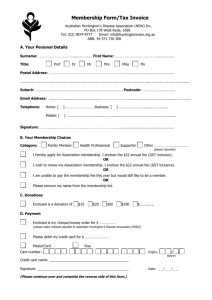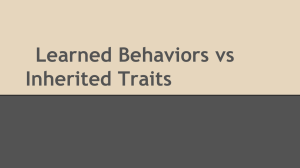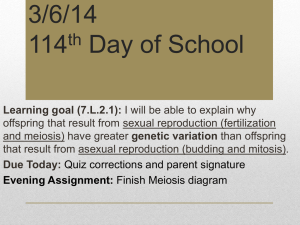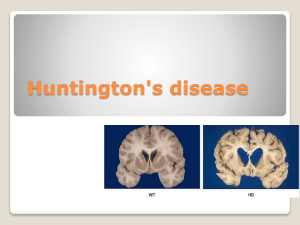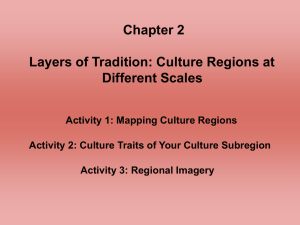Weather Forecasting Web Quest
advertisement
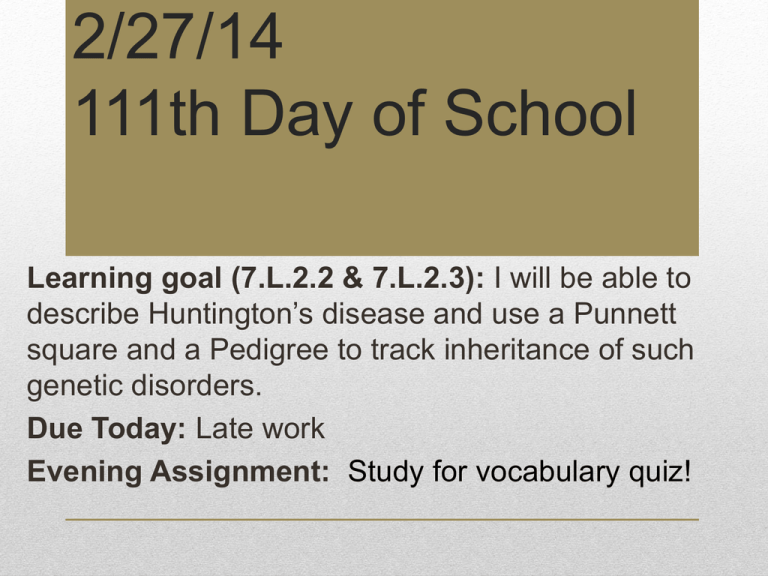
2/27/14 111th Day of School Learning goal (7.L.2.2 & 7.L.2.3): I will be able to describe Huntington’s disease and use a Punnett square and a Pedigree to track inheritance of such genetic disorders. Due Today: Late work Evening Assignment: Study for vocabulary quiz! Hawley Hornets Team Dr. Batten Shon B. Justice N. Logan Jacobi Cody Wilkins Ethan Batten-Hicks $200 from Hawley!!! $650 Total raised so far A way you and your family can help fund research to fight childhood cancers: Donate at least $1 dollar to the Hawley Hornets team. Homeroom teachers will collect your donations until Friday. *** all donations are tax deductible *** St. Baldrick’s Cancer Research Fundraiser 1. The grandfather in this family was a “high risk” individual. How many of his children were either medium or high risk individuals? How many of his grandchildren were either medium or high risk? 2. Did the number of “medium risk” & “high risk” individuals decrease or increase over subsequent generations? Why do you think that happened? 3. If a parent is diagnosed with heart disease, does that mean the children will have it also? Defend your answer. With your partner write the answers to the above questions on the back of your Pedigree chart. Do Now: Group Discussion 1. The grandfather in this family was a “high risk” individual. How many of his children were either medium or high risk individuals? How many of his grandchildren were either medium or high risk? Each group will have different results. 2. Did the number of “medium risk” & “high risk” individuals decrease or increase over subsequent generations? Decrease Why do you think that happened? Risk of inheriting heart disease from an affected individual decreases through the generations because it is unlikely that all of the necessary risk factors (genes) will be passed down to less closely related family members. 3. If a parent is diagnosed with heart disease, does that mean the children will have it also? Not necessarily. Defend your answer. Because heart disease does have a genetic component, children of an affected parent have an increased risk of developing heart disease relative to the population at large. Do Now: Group Discussion Huntington’s Disease Video http://youtu.be/4HgFUvVyHYQ Description: Huntington’s Disease is a DOMINANT genetic disorder passed down through families in which nerve cells in certain parts of the brain waste away, or degenerate. Characterized by jerking uncontrollable movement of the limbs, trunk, and face (chorea); progressive loss of mental abilities; and the development of psychiatric problems. Cause: Huntington's disease is caused by a genetic defect on chromosome 4. The defect causes a part of DNA, called a CAG repeat, to occur many more times than it is supposed to. Normally, this section of DNA is repeated 10 to 28 times. But in persons with Huntington's disease, it is repeated 36 to 120 times. Inheritance: If one of your parents has Huntington's disease, you have a 50% chance of getting the gene for the disease. If you get the gene from your parents, you will develop the disease at some point in your life, and can pass it onto your children. If you do not get the gene from your parents, you cannot pass the gene onto your children. In autosomal dominant inherited disease, a single abnormal allele is inherited from one parent. Any child, male or female, with one affected parent has a 50% chance of inheriting Huntington's disease. Incidence: One in every 10,000 persons—nearly 30,000 in the United States— have Huntington's disease. Juvenile Huntington's occurs in approximately 16% of all cases. Huntington's disease is not prevalent within any particular population. All races and ethnic groups, and both sexes are affected. Treatment: There is no cure for Huntington's disease. Treatment focuses on reducing symptoms, preventing complications, and providing support and assistance to the patient and those close to him or her. Huntington’s Disease What are the phenotypes of the children? What are the chances of a child getting Huntington’s Disease? How do you know that it is a dominant disorder? Punnett Square for Huntington’s Disease 50% 75% What are the chances of a child getting Huntington’s Disease? Phenotypes: Healthy (hh) or have Huntington’s Disease (HH or Hh) How do you know it is a dominant disorder? It only takes 1 copy (H) Punnett Square for Huntington’s Disease Write a story about this American family with Huntington’s Disease. Huntington’s Disease Pedigree On the FRONT Acquired Trait On the BACK Definition/characteristics: A trait or characteristic that is developed or learned through life. Traits you aren’t born with. Traits GENERALLY not controlled by DNA. Examples: Walking, speaking English, dyed hair, pierced ears, Glasses, skin cancer? Acquired trait Inherited trait Sexual reproduction Heredity DNA Chromosome Gene Allele Genotypes Phenotype Dominant Recessive Gregor Mendel Pea Plants Huntington’s Disease Punnett Square Monohybrid cross Homozygous (Purebred) Heterozygous (Hybrid) Mutation Genetic Disorder Sickle Cell Anemia Hemoglobin Pedigree Genetics Vocabulary Flashcards due 2/28/14 Make a genetics vocabulary word chart as a study guide for your vocabulary quiz on Friday. See some examples below. Include ALL 24 vocabulary words! Word Definition & characteristics Examples Inherited trait Traits that you are born with that are passed to you through your parents genes. Eye color, hair color, widow’s peak Homozygous A trait where both alleles SS, tt, NN are identical (purebred). Genotype Genes an organism has. Gg, SS, tt Phenotype Physical traits that are observed or present Blue eyes, sickle cell anemia Genetics Vocabulary Chart – Due 2/26/14 Choose ONE of the following projects to do as a summative MAJOR assessment for the Genetics Unit. Do detailed, quality work to get full credit. Selective Breeding vs. Genetic Modification Corn is one of the most manipulated crops. Create a Presentation or Poster comparing traditional selective breeding vs. genetic modification (GMO). Explain the two methods and then show some specific corn varieties/cultivars that were created with each method and how. Genes associated with inherited traits We learned about several common inherited human traits. Pick at least 10 traits to research and which genes control these traits. Include pictures of the traits phenotypes as part of your presentation. You may complete as a Word document or presentation. Inheritance of Eye Color Create a Powerpoint presentation about the genetics of eye color. Include information about the different types of eye color, any genes that are associated with eye color, and how eye color is inherited. In your final slide, explain how YOU inherited your eye color. Myths of Human Genetics Dr. John McDonald from the University of Delaware has written that many of the inherited traits students learn in genetics class AREN’T really inherited in a simple dominant vs. recessive pattern that is taught. Create a Powerpoint to review his arguments and compare it to what MOST genetics students learn. Meiosis Game Create a game to help students learn the steps of meiosis. Students must answer questions about chromosomes, genes, DNA, and meiosis to advance through the stages of meiosis I and meiosis II. You win when you reach the final gamete stage. Plant Genetics Grow two different species of plants and create a digital comparison of their phenotype similarities and differences (appearance, size, growth rate, etc). Then research the genetics of the two species summarizing what you find. Include the number of chromosomes and genome size Expanded Traits Survey Create YOUR OWN survey of ten inherited traits. You may use 5 of the ones we did but must include 5 new ones. Sample at least 50 people. Write up your finds as a Research Investigation Article – but with more detailed and thorough sections than we did as a class. Genetic Disorders Create a Presentation about a specific genetic disorder. You must include the following information about that disorder: description, signs/symptoms, how it’s inherited or acquired, genes affected (including the mutation if known), incidence, and treatment. GMOs in the News Farmers and scientists use GMOs to create better crops. Write a news article picking a specific GMO and discuss the process, the benefits, and risks of using that GMO History of Genetics Create a timeline about the history of genetic knowledge starting with ancient times (ex. Biblical times) through the present. You must have at least 15 descriptions along the timeline. Selective Breeding in Dogs Dog Breeders use selective breeding to improve dog breed. Create a brochure to explain the selective breeding process and use specific examples to show how breeders have gotten new dog breeds. Pedigree Analysis Create a pedigree of at least three generations using a single inherited trait. You must use a REAL family either your own or one you research. Include a Punnett square from each generation to show how that trait was inherited (3 total) Genetics Projects – due 3/21/14 Tonight… 1. Study for vocabulary quiz! 2. Complete late work! 3. Genetic project is due March 21st. Evening Assignment
